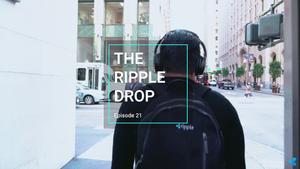The latest episode of The Ripple Drop looks ahead to the future development of the XRP Ledger and how US crypto regulation needs to evolve to help tech innovators.
Changing the Face of Global Payments
Vidya Mani accepted the role of Ripple’s new VP of Engineering because she believes the company has a compelling opportunity to provide great payments experiences, especially for customers in underserved markets.
Her team continues to make the On-Demand Liquidity experience even more seamless, efficient and reliable for RippleNet customers. But she also wants them to apply their energy, passion and diversity of thought and culture beyond cross-border payments, telling The Ripple Drop:
“My goal for the team is to build a platform which can anticipate and support a wide variety of solutions that can fundamentally change the way global payments operate.”
External Core Contributions
The XRP Ledger (XRPL) features contributions from both Ripple and non-Ripple engineers and Ripple’s Director of Engineering, Nik Bougalis, looks forward to the continued evolution of the XRP Ledger in partnership with the community. The recently released XRPL v1.6, which includes advancements like negative UNL code and hardened validations, feature external contributors to the core code.
Not only are external contributors building on the XRPL, but external developers are also found working on wallets and other crypto tools where they benefit from XRPL’s speed, low cost and high volumes of transactions, as well as support for a rich set of functionalities like time locks, escrows and multi-sign.
“It will be interesting to see the community develop more and build up their knowledge base.” Nik says.
The US Risks Being On The Wrong Side of Innovation And History
Ripple’s General Counsel, Stuart Alderoty welcomes the recent announcement from the Office of the Controller of the Currency saying that banks can provide custody of crypto assets for consumers. He also points to the Consumer Finance Protection Bureau’s recognition of Ripple and XRP as consumer-friendly cross-border payments solutions as signs of hope for the US industry.
Yet the Securities Exchange Commission (SEC) continues to pursue the same approach it first took in the face of 2018’s wave of fraudulent Initial Coin Offerings by regulating through enforcement. With other countries now implementing regulation that protects consumers and markets without suffocating innovation, Stuart believes the US will miss out if the SEC doesn’t change its approach.
“If I’m a young innovator and I’m looking at the U.S. regulatory landscape,” Stu explains, “I’m not really sure whether what I’m about to do is going to be considered good or bad. I may never even start the innovation or I may take it to Singapore, to Japan, to Switzerland, to the UK.”
To hear more from Stuart on how US policymakers can encourage homegrown innovation and from Vidya and Nik on the exciting progress made by Ripple’s Engineering team and external developers, check out the latest episode of The Ripple Drop.





.jpg?u=https%3A%2F%2Fimages.ctfassets.net%2Fst43jm402pmo%2FWp9NUNV8ISSbvKAdUbOMQ%2F436b02d39fd4e6066462c3d52ece5ceb%2Fkayle-kaupanger-JHM0-q9tlgQ-unsplash__1_.jpg&a=w%3D132%26h%3D74%26fm%3Djpg%26q%3D75&cd=2024-07-15T19%3A45%3A32.894Z)

.jpg?u=https%3A%2F%2Fimages.ctfassets.net%2Fst43jm402pmo%2F7BXlF78uUDgQXHVhOVzpwE%2Fbedd0c339b68defc44e9faddfe3073ea%2Ftom-bullock-QQ4qvFzMbvU-unsplash__1_.jpg&a=w%3D132%26h%3D74%26fm%3Djpg%26q%3D75&cd=2024-07-03T17%3A19%3A07.964Z)

